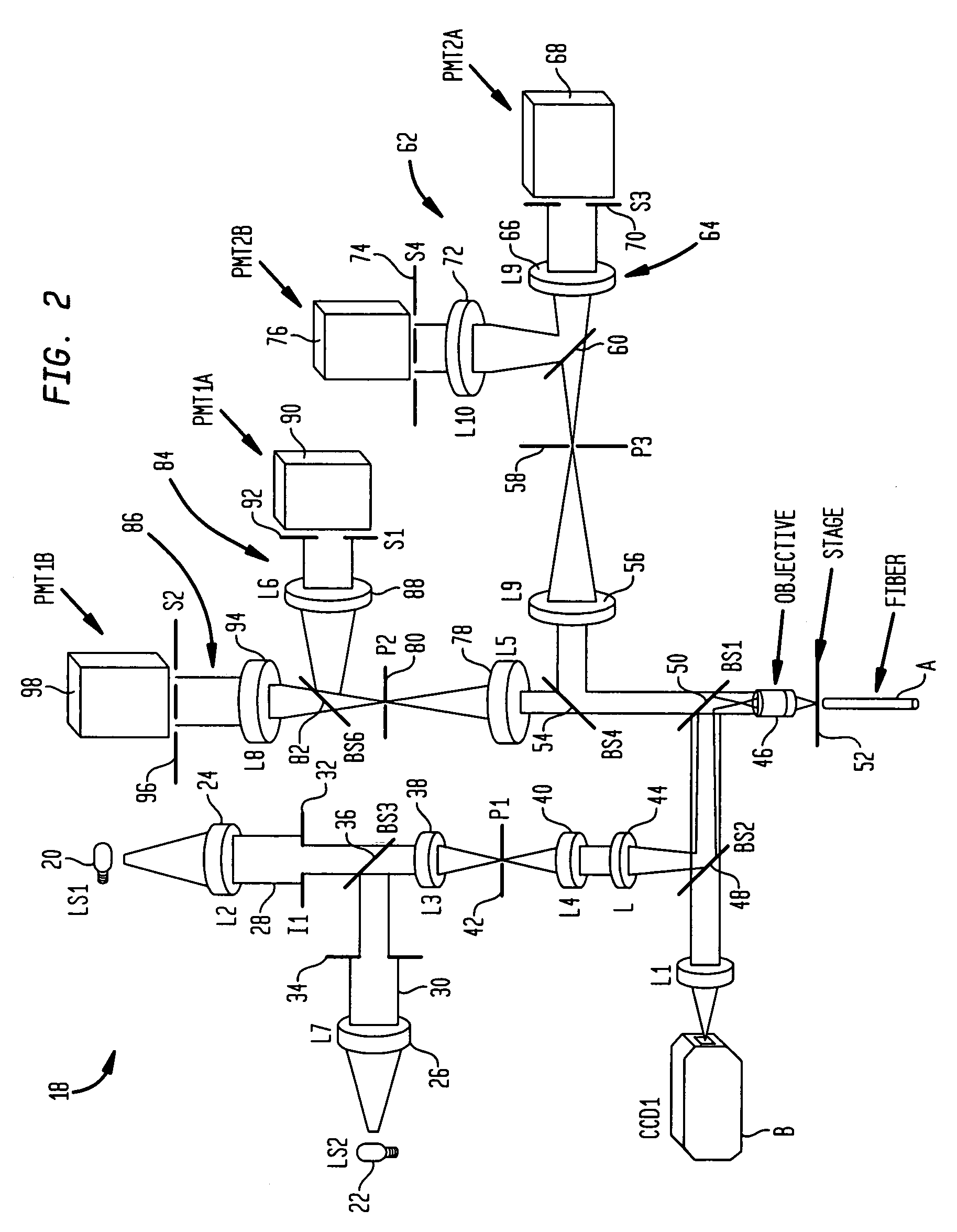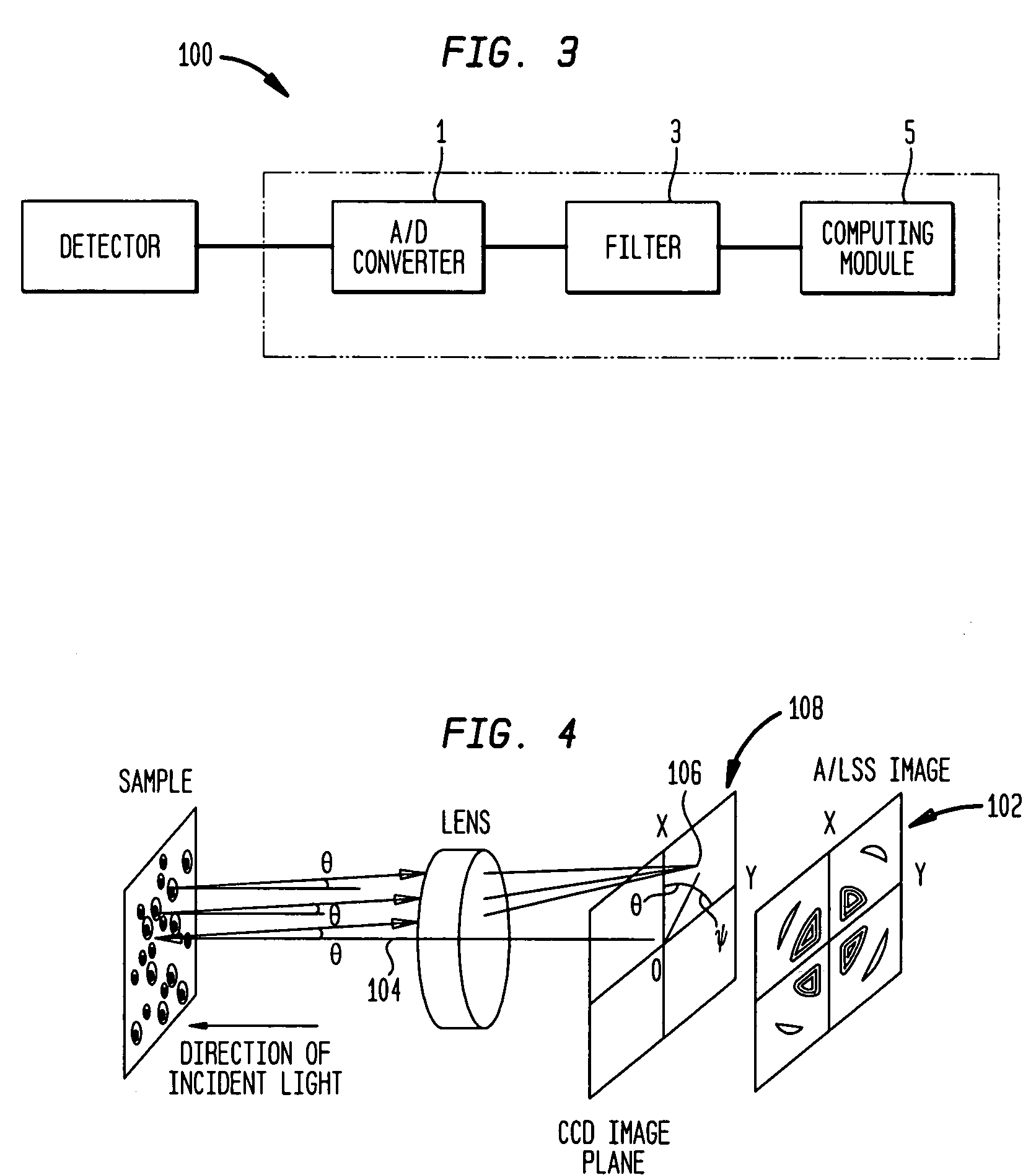Methods of in vivo cytometry
a flow cytometry and flow cytometry technology, applied in the field of in vivo flow cytometry, can solve the problems of inability to obtain a reliable temporal cell population profile for a cell type of interest, inaccuracy of measurement, and inability to use ex-vivo techniques to achieve reliable temporal cell population profiles
- Summary
- Abstract
- Description
- Claims
- Application Information
AI Technical Summary
Benefits of technology
Problems solved by technology
Method used
Image
Examples
Embodiment Construction
[0030]The present invention provides methods and systems for performing in-vivo flow cytometry in a live subject to obtain desired information regarding one or more cell types of interest, for example, a relative count of these cell types. As discussed in more detail below, in many embodiments of the invention, a portion of a subject's circulating blood is illuminated with radiation having one or multiple wavelength components, and the backscattered radiation generated in response to the excitation radiation is detected at a plurality of scattering angles, and analyzed to derive the desired information.
[0031]More specifically, with reference to a flow chart 10 of FIG. 1, in one embodiment of the method of the invention for performing in-vivo cytometry, in an initial step 12, a portion of a subject's circulating blood is illuminated with radiation having at least one wavelength component, and more preferably two or more wavelength components. For example, an illuminating radiation be...
PUM
 Login to View More
Login to View More Abstract
Description
Claims
Application Information
 Login to View More
Login to View More - R&D
- Intellectual Property
- Life Sciences
- Materials
- Tech Scout
- Unparalleled Data Quality
- Higher Quality Content
- 60% Fewer Hallucinations
Browse by: Latest US Patents, China's latest patents, Technical Efficacy Thesaurus, Application Domain, Technology Topic, Popular Technical Reports.
© 2025 PatSnap. All rights reserved.Legal|Privacy policy|Modern Slavery Act Transparency Statement|Sitemap|About US| Contact US: help@patsnap.com



